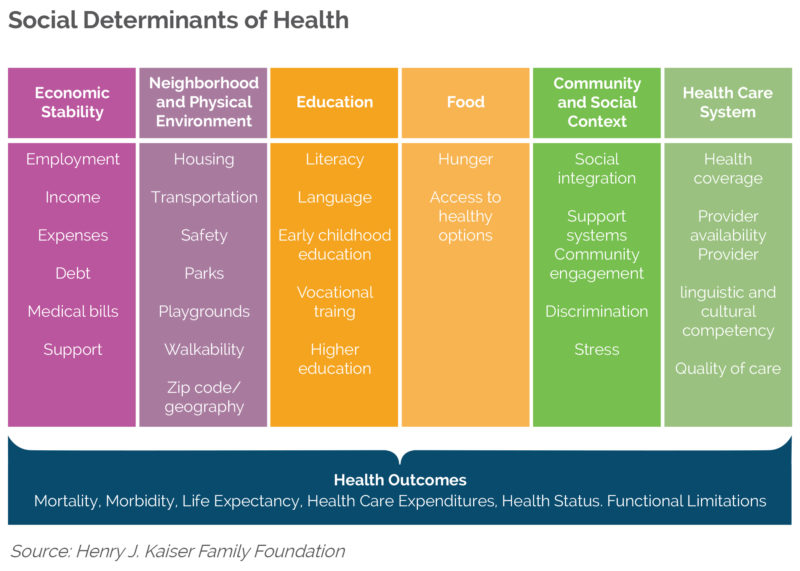Healthcare providers are becoming increasingly aware that a great deal of what makes up a patient’s overall health occurs outside of the four walls of the hospital or doctor’s office. Social, environmental, and behavioral factors play a large role in our health, and care providers need to be creative in finding ways to make an impact beyond the few moments they spend with patients face-to-face.
In fact, a report from the Yale Global Health Leadership Institute notes that actual medical care only makes up 20% of what determines a patient’s health; the rest is determined by genetics (20%) and the majority by social, environmental, and behavioral factors (60%).
One solution that many providers, hospitals, employers, and pharmacies are increasingly turning to in an effort to improve patient outcomes, reduce hospital readmissions, and lower healthcare costs is developing a community network of resources that can help address social determinants of health (SDOH) – factors such as education level, income, access to nutritious food and transportation, and more.
By implementing technology that combines patient awareness and education about SDOH with personalized networking services that connect patients directly with community resources that can address those concerns, we can help break down SDOH barriers and provide patients with the holistic resources needed to positively influence health both in and out of the hospital.
“I’ve seen so many patients over the course of my career who wanted to stay healthy and comply with their medication regimen or discharge plan, but social determinants were working against them,” says Kelley Smith, RN, MPH, former case manager for Henry Ford and Trinity health systems. “Having access to community resources and a way to efficiently connect patients to those organizations can have a tremendous effect on outcomes. Without a way to address the root causes of non-compliance, we’re doing a huge disservice to our patients.”
Download our white paper to discover more:
